Creating a buzz
Editor's note: Elliot Savitzky is senior vice president at TRC Market Research. He can be reached at esavitzky@trcmarketresearch.com. Hannah Robbins served as fractional CMO for Spruce Haven Farms at the time of the project profiled in this article. She can be reached at hannahrobbins13@gmail.com.
Spruce Haven Farms (SHF) is a fourth-generation family farm and one of the largest farms in Upstate New York. Milk from its 2,000+ cows supplies some of the top brands in today’s competitive yogurt market. The family spent 20 years working on nutritional science to create a way to make cow feed that could improve the nutritional benefits of their cows’ milk, with the end goal of enhancing people's wellness and nutrition.
They entered a partnership with Finca Dos Marias, a coffee farm in Guatemala, and came up with the idea for a better-for-you cold brew coffee. SHF selected the whimsical name Cowffee based on input from friends and family. Given the founder and his stakeholders’ demographics (ages 60+) SHF felt that since Baby Boomers really need better nutrition and Baby Boomers are crazy about coffee, why wouldn’t Cowffee be a great idea? Spruce Haven would combine its healthy and nutritious milk with this coffee and Baby Boomers would love it.
Well, it didn't quite work out as planned and we’ll shortly see why.
Conduct the proper research
Research companies like TRC Market Research (TRC) often get calls from founders of small start-ups and entrepreneurs looking for help in furthering their cause. There are usually four things they all have in common: they have a quality product or service they are looking to sell; they do not have the skill set to take the product or service to market successfully; they are most often unwilling to change the way they are thinking about their business; and lastly, they don’t have the resources to conduct the proper research to develop that go-to-market (GTM) strategy. They also don’t know what they don’t know and they’re not even sure they need to know it.
Such was the case here. When we met with the assembled team (including SHF’s founder, board of directors, marketing and sales team and a package designer) it became clear that scaling and launching the brand nationally would be a challenge. Internal stakeholders each had entirely different opinions about what the product was, what its name should be, who the target consumer was and what the packaging should look like. There was no proof of concept for the brand positioning, no list of reasons to believe in the product, no identified target audience and no retail strategy. There were no professional insights and research to establish a revenue-based GTM strategy.
The client had made assumptions about specific marketing components for the brand, not based on any research but based solely on their opinions. Even if they had guessed right, they still did nothing to confirm their assumptions. As it turned out, they had targeted incorrectly (Baby Boomers), landed on a name that did not resonate with consumers (Cowffee) and decided that the most important benefit to talk about was an ingredient no one understood.
Differentiate the product
Based on years of experience helping companies develop products and create positionings for them, we knew we had to turn to marketing research to understand who to target and how best to differentiate the product in the market.
The first step was determining the core brand values that resonate with the high-value target audience. Every great brand starts with a strong foundation. In today's marketplace, that means that a new brand needs to be even more transparent and authentic, especially given the societal rise in and awareness of misinformation.
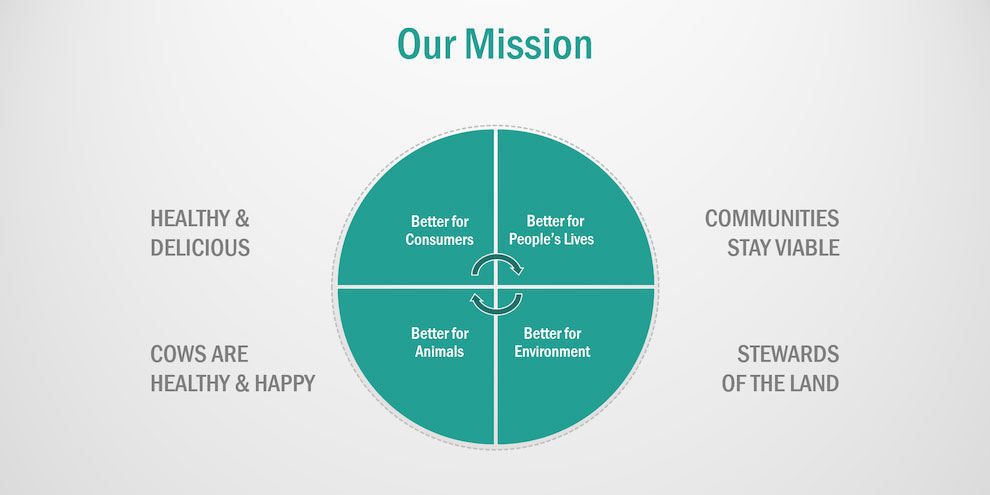
Let’s look at where we started. The graphic in Figure 1 shows the four quadrants of Spruce Haven Farm’s mission. It was created based on SHF’s philosophy and could be used to help guide the launch of any of its products. What made the cold brew coffee product so exciting was that it was the first of its kind: There was no similar offering on the market that helps boost your immune system, has 22 grams of protein and is lactose-free.
The product delivers a veritable cornucopia of additional benefits: delicious, no sugar aftertaste, no sugar buzz, low in sugar, high in protein, clean-label. It is also shelf-stable and can be merchandised in multiple places – either in a beverage cooler or in the coffee section, which is a positive but is also challenging at the same time.
Another potential selling point is the high level of an immunity-boosting ingredient called conjugated linoleic acid (CLA) that Spruce Haven Farm had been working on for 20 years. The increased level of CLA in the milk was a direct outgrowth of the farm’s efforts to improve the nutritional benefits of the feed that is grown for its cows. As this launch was being formulated during the pandemic and its attendant focus on health and health care, there was a merging of unusual times and exceptional people working for a wonderful purpose (Figure 2).
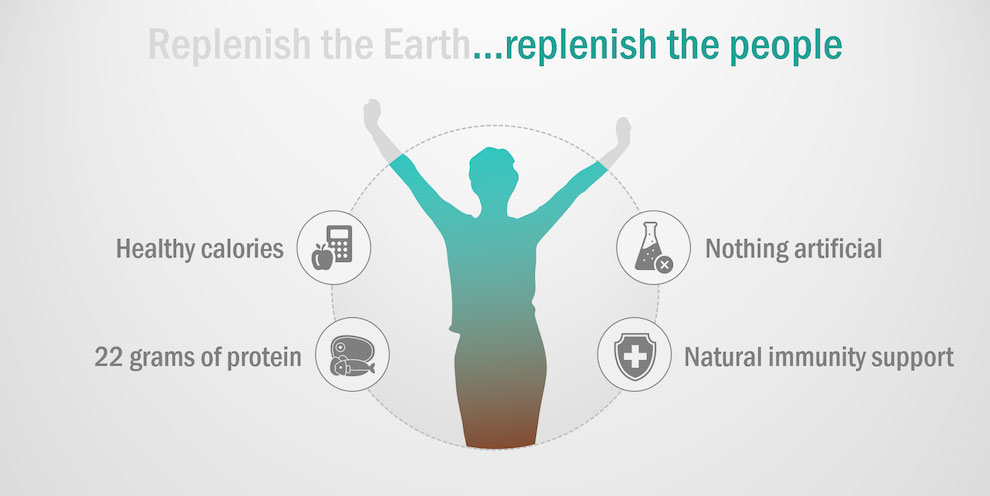
Creating a value proposition from scratch
We knew that with no preconceived, consistent value proposition, a sound commercial strategy would have to be established. The original value prop was all about CLA, about fighting disease, about immunity, about cows and Guatemala. In other words, it was all over the place. So we had to create a clear focal point. But that's okay, because whether you work for a giant CPG company or an emerging brand with no money, you still need a commercial strategy that works.
The challenge we faced was, essentially, how to come up with a GTM strategy that leveraged an effective value proposition. The value prop needed to incorporate a package that concisely communicated the key benefits and appeal to the most appropriate key target market, with a name that works and a message that clearly and positively differentiates it from the competition.
The brand name, although meaningful to the current stakeholders, had not been tested among a relevant audience. The package (Figure 3) featured the term CLA, which is an advantage for the product but not something with which the mainstream consumer is familiar. Underestimating the inherent value of on-trend packaging is a mistake when it is such a critical component of any brand. The brikpak packaging typically used for shelf-stable beverages is nearly 60 years old, creating an opportunity to update the packaging structure as well as the graphics.
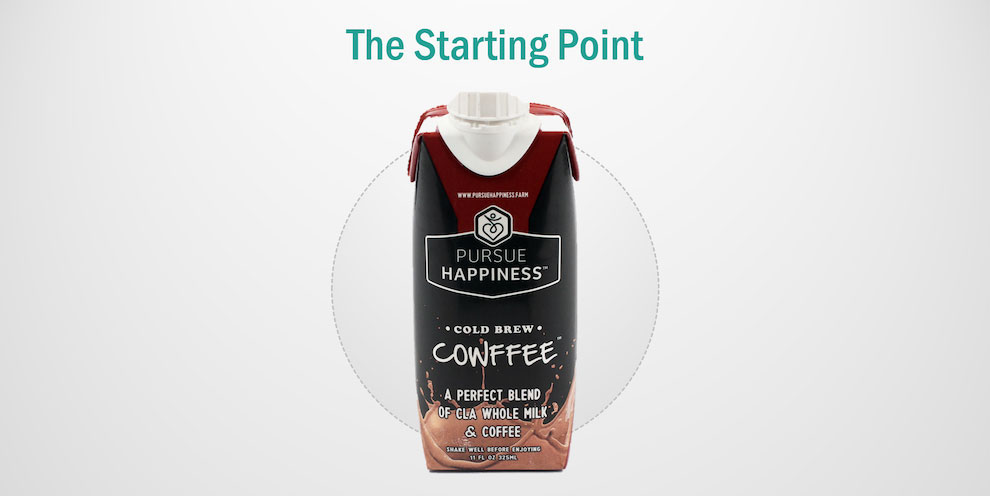
We first had to develop a hypothesis for who would be the product’s most appropriate consumer. We had the consumer originally targeted by the client – the Baby Boomer – but nobody had worked out which sector of the market would generate the greatest revenue from sales. Was it Gen Z? Gen X? Millennials?
Secondary data indicated that the more appropriate target for this new drink was likely to be the younger generations. From what we found, roughly half of the Gen Z and Millennial population either purchased iced coffee in the previous month and/or drank gourmet coffees daily.
And there is no doubt that the last few years were a defining time in all our lives. Faced with extreme measures being taken all around us because of the COVID-19 pandemic, Gen Z and Millennial consumers gravitated towards products that were better or good for them and aligned with brands that supported these new lifestyle trends.
Spruce Haven Farms, therefore, was in the perfect position to provide a solution that these two generations were inclined to adopt. A “boost to immunity” message was the perfect fit for consumers with a desire to improve their health from an attitudinal, behavioral and health profile perspective.
Spoke to the target market
We felt confident about who was going to benefit most from this product but before we embarked on a large-scale research project, we needed to create a new package structure and design for the product, one that spoke to the target market and which instantly conveyed key benefits.
Working with a world-class CPG designer, the marketing team produced a multitude of high-potential packaging alternatives, with various treatments for the colors, the names and the hierarchy of communication of benefits. This allowed us to determine what would work best with the target group rather than simply guessing.
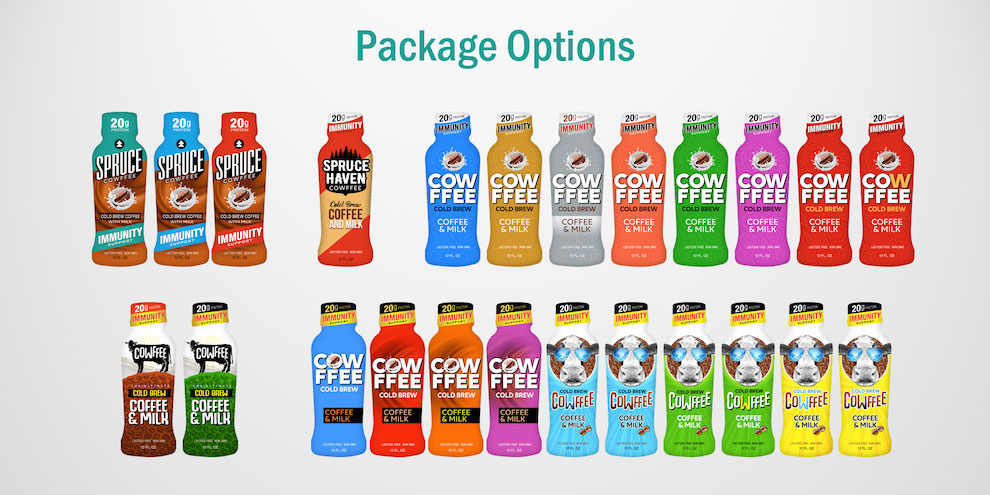
We were given 24 potential package design concepts to work with (Figure 4). Notice the different brand names, from the current Cowffee to Spruce Haven to simply Spruce. Many combinations of color, version of cows, immunity benefit, coffee, milk, cold brew and other aspects. One of our challenges was a stakeholder bias that clouded their ability to see the value in testing new designs, especially ones that differed so greatly from their original one.
The question then became, how do we sort through all these options to select what will work best with the target market we are interested in? We needed a way to identify the top designs that would resonate with a revenue-driving target market.
We turned to a TRC product called Bracket, named after its tournament-style approach to competitively pairing alternatives until you find an outright winner. Through a series of random pairings of the 24 packages, we quickly determined which were most appealing by testing them among a sample of over 2,000 Gen Z and Millennials.
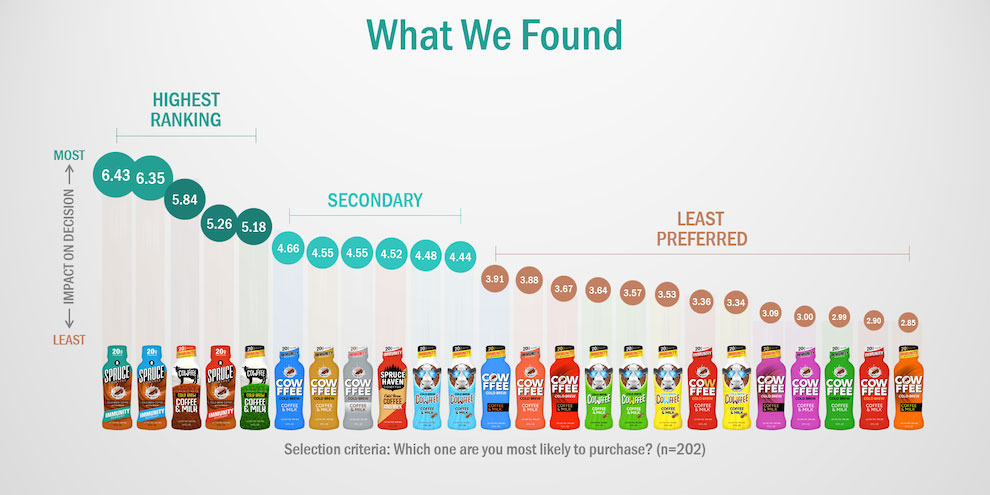
And as you can see in Figure 5, we laid out the best-performing and worst-performing package alternatives on an array that was easy to view and easy to understand. From left to right, the different packages are displayed in terms of their importance, from most to least. Notice that there are five packages that have been separated from the rest of the pack on the left, with two of them ranking significantly higher than the other three. Both were named Spruce and in fact three of the top four had the name Spruce, with the only difference being the colors of the packaging.
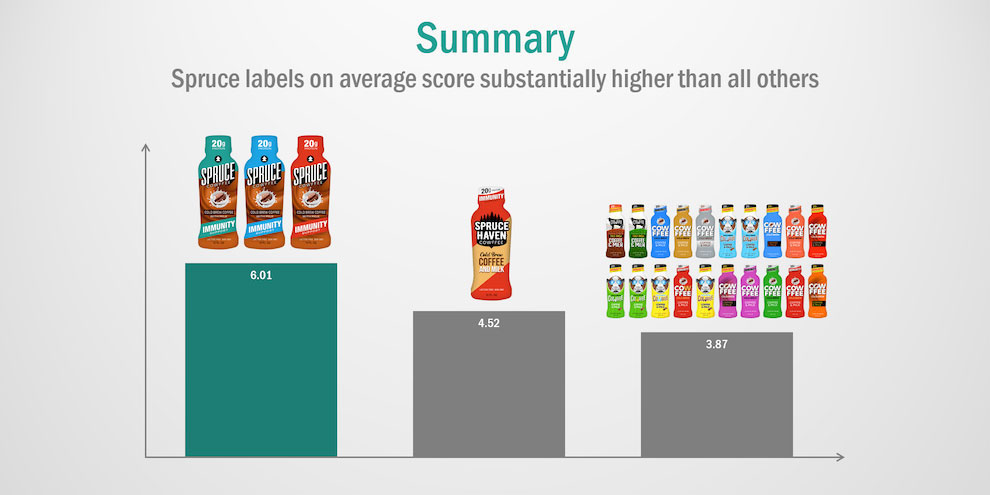
Spruce was ranked almost twice as high as the Cowffee alternatives, with Spruce Haven somewhere in between (Figure 6). As an aside, we did find that the larger the font for the name Cowffee, the poorer the package performed – which is not something we would have predicted. Clearly, this target group of Gen Z and Millennials have their preferences for what this product should have been called, proving the importance of conducting research and illustrating the importance of eliminating personal bias in steering the business in the right direction for success.
A path forward
Now that we had identified a path to move forward, with an alternative target group, a new package and a preferred name, we needed to confirm the appeal and to create a leverageable positioning for the brand. In part two next issue, we will describe the step-by-step process of applying research techniques to create the positioning for this new brand and gear it up for success.
